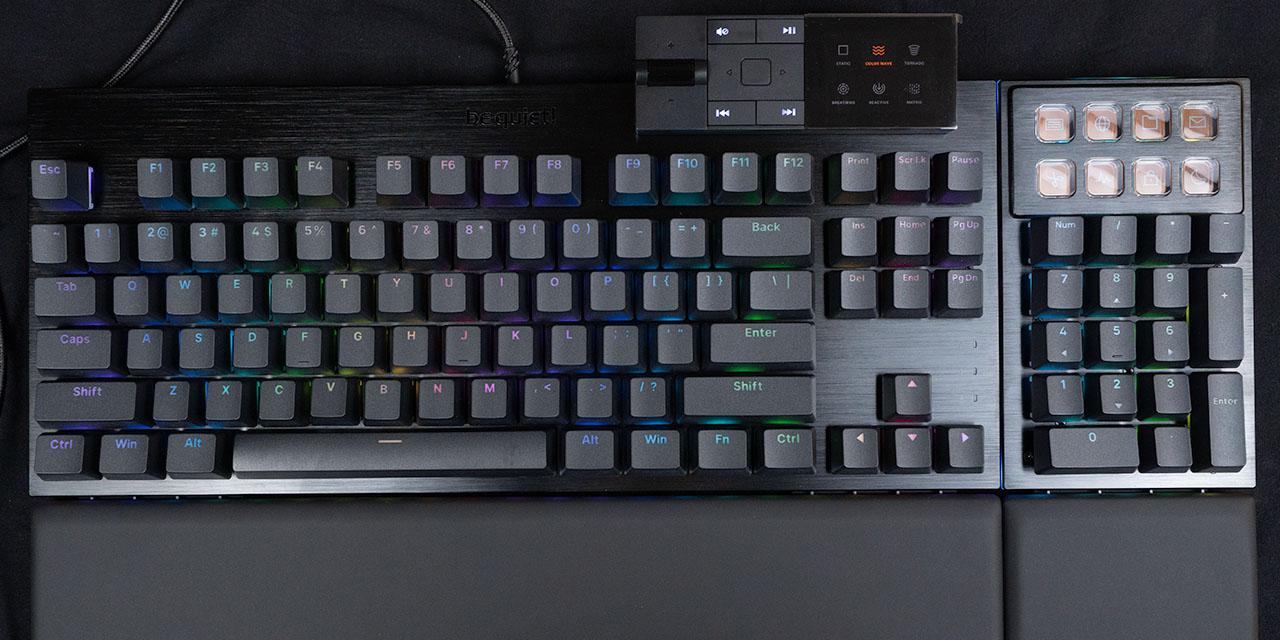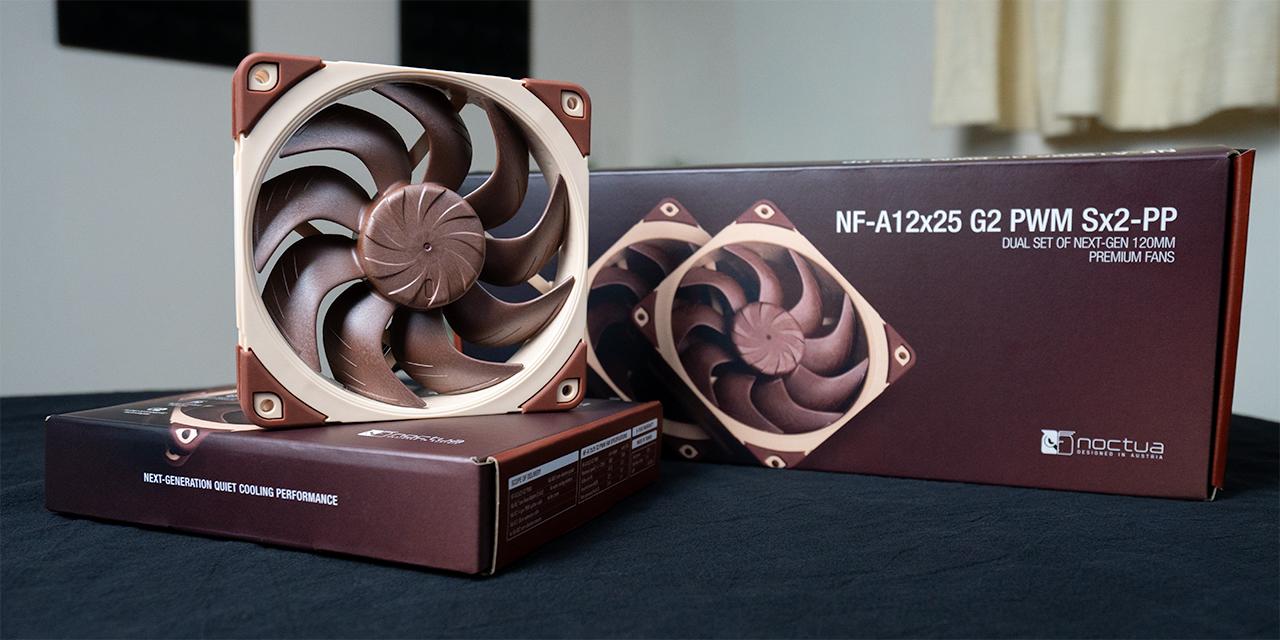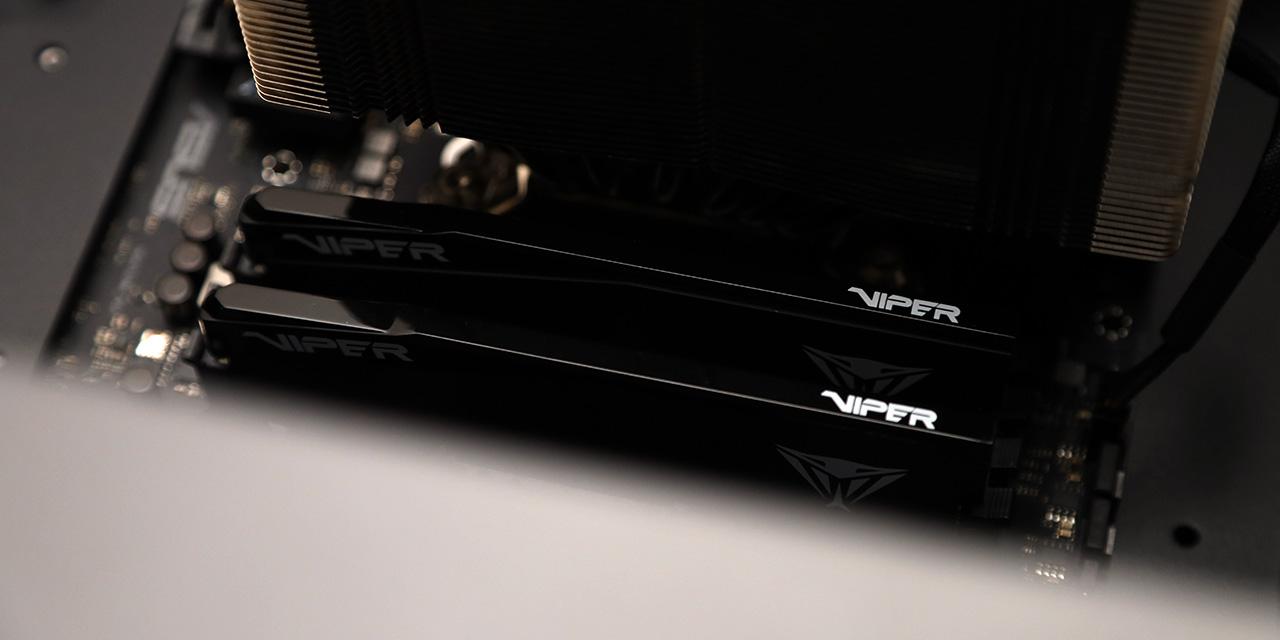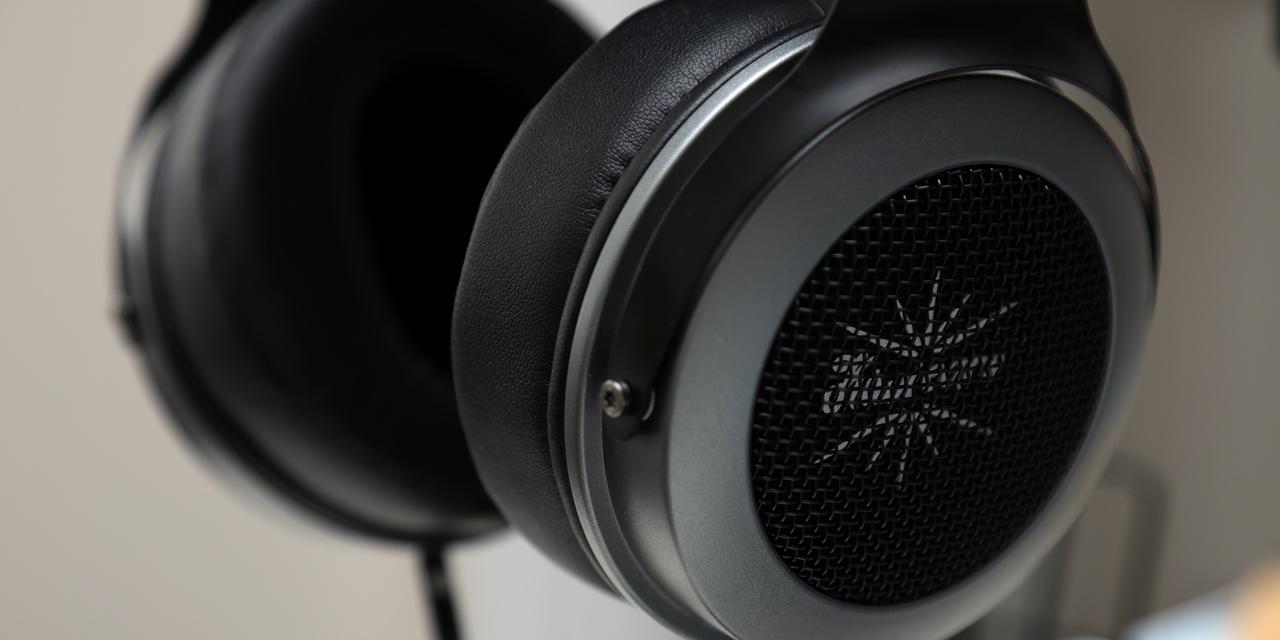Page 2 - A Closer Look - Hardware and Software

The Epomaker TH40 is a 40%, ultra-compact layout keyboard with only 44 keys. This is significantly less compared to a full-size keyboard, which would typically have 104 keys, and a lot smaller in footprint as well. It also curiously comes with a carry strap attached to the left side. The keyboard comes in Black Gold or Purple colorways, and a selection of Epomaker Flamingo switch or the linear Wisteria switch. The review unit we have is the Black Gold version with the Flamingo switch.

The layout of the TH40 strays from that of most standard keyboards. As it is a 40% layout, many of the modifier keys are differently sized. The '?' key has been relocated to the bottom left, and the number row has completely disappeared. Many missing functions need to be accessed via the 'Fn' key in conjunction with the remaining keys. The space bar has been split into two, with the 'Fn' key wedged in the middle. The design of the keyboard is very compact, measuring 258mm wide, 97mm deep, and 35mm tall. If portability was a top priority, this keyboard would rank pretty high. The case of the keyboard is made of black plastic, with gold appearing only on the space bar, Enter, and Tab keys. Despite the all-plastic construction, it feels fairly solid with limited flex, and weighs 0.5kg.
There are three indicator lights on the top-left edge of the keyboard, showing Caps Lock, Win Lock, and wireless connectivity, from left to right, respectively. The flip-out feet on the bottom can further elevate the typing angle. Perhaps the most curious design choice is the removable carry strap attached to the left side of the keyboard. There is a small plastic bar to which the strap attaches. The strap itself has a faux-leather anchor with brass screw rivets, while the rest of the loop is made from a seatbelt-like material.

The keycaps are Cherry profile, which are my personal favorite. The keycaps are made out of PBT plastic, which offers good wear and shine resistance compared to ABS plastic. The legends are printed with dye-sublimation, which are essentially baked into the plastic and are quite durable unlike laser printing or silk screen, but not as premium as double-shot injection molding. Unfortunately, the legends have inconsistent centering, with some slightly shifted right. The design of the legends also looks like they should be perfectly centered, making the keycaps look cheap. The original color of the keycaps is white, with ink applied on the top and sides of the keycap to produce the black and gold colors. There are quite a few non-standard sized keycaps to be aware of. The backspace is 1.5U, right shift is 1.75U, left shift is 1.25U, left space bar is 2.25U, and right space bar is 2.5U. Finding aftermarket keycap sets to fit this keyboard may be more difficult or expensive.

The TH40 has smooth edges and contours all around, with minimal details to note. The left side has a small plastic loop for the strap, and it is not until we make our way to the rear that we find more useful features. We find the connectivity switch and USB Type-C port at the back. The connectivity switch slides between 2.4GHz, USB, and Bluetooth.

The bottom of the TH40 has two single stage flip out feet to adjust for the typing angle. The front has two long horizontal silicone feet, and the back has two vertically oriented feet. A shiny silver label with Epomaker and TH40 branding is found dead center. No screw holes are visible on the keyboard, and I was unable to find an easy access point into the internals of the keyboard.
The typing feel of the TH40 is very pleasant. Keystrokes are smooth and satisfying, with a nice bottom out sound lying somewhere between thocky and clacky. There is no scratchiness found in the switches, nor is there spring ping. The keys are responsive, and for simply typing words, I was able to get up to my regular typing speeds very easily. The gasket mounting is not very noticeable. There is a bit of cushioning when bottoming out, but it is not the most pillowy typing experience. Instead, it is a somewhat firm typing experience, but not fatiguing at all. Looking at the TH40 strictly from typing feel, it provides a very pleasant experience. However, due to its layout, typing sentences and other things became frustrating. Although typing words is not an issue, punctuation and numbers are hard to get used to, and some things are outright missing. Certain characters and functions must be added onto different layers through customization using the VIA app. Arrow keys are also hidden behind the function layer.
The Epomaker TH40 has two wireless modes, including 2.4GHz at up to 1000Hz polling rate or Bluetooth at up to 125Hz polling rate. Both modes provide a stable typing experience with no drop out. For maximum typing performance, the 2.4GHz or wired connection is favored. There is N-key rollover or NKRO on the keyboard, which allows for multiple keys to be simultaneously pressed and registered as an input. Up to three Bluetooth devices can be paired to the keyboard. Switching between them requires pressing Fn + Q/W/E buttons. This can also be customized using the VIA app.

There is no official battery life stated for the TH40. In my brief testing on 2.4GHz and lighting set to 50%, I got an estimated 30 hours of continuous use. Battery charging is through the USB Type-C port on the back, and the battery level can be checked by pressing and holding ‘Fn’ + left space bar. The letters ‘q’ through ‘p’ can light up with each letter indicating a 10% charge. The listed battery capacity is 3000mAh, with the actual battery life being comparable to other Epomaker keyboards. It is not outstanding by any means, but definitely serviceable.

Preset lighting modes are available on the TH40. The RGB LED lighting is vibrant and shines through the gaps between the keycaps. Various modes can be cycled through, including color waves, reactive typing, solid colors, and more. Brightness levels, saturation, and hues can also be adjusted using various keypress combinations. These functions are best programmed using the VIA app. VIA is a graphical keyboard customization software favored by enthusiasts for customizing, testing, and designing keyboard layouts. For a button-limited keyboard like the TH40, it is helpful to be able to use multiple layers to access additional functionality. Layers can be likened to an advanced shift key. However, the implementation of the TH40 on VIA is not straightforward. When using the TH40 on usevia.app, the online interface, it is not instantly recognized or programmable. The JSON file that defines the keyboard’s functions and layout needs to be downloaded from Epomaker’s website and uploaded to VIA. VIA also needs to be set to version 2, which took some fiddling to get working. A desktop version of the VIA application seemed to work better. Unfortunately, Epomaker keyboards do not appear to be officially compatible with VIA, requiring extra steps to make them work properly.
Page Index
1. Introduction, Packaging, Specifications
2. A Closer Look - Hardware
3. A Closer Look - Disassembly and Internals
4. Conclusion





